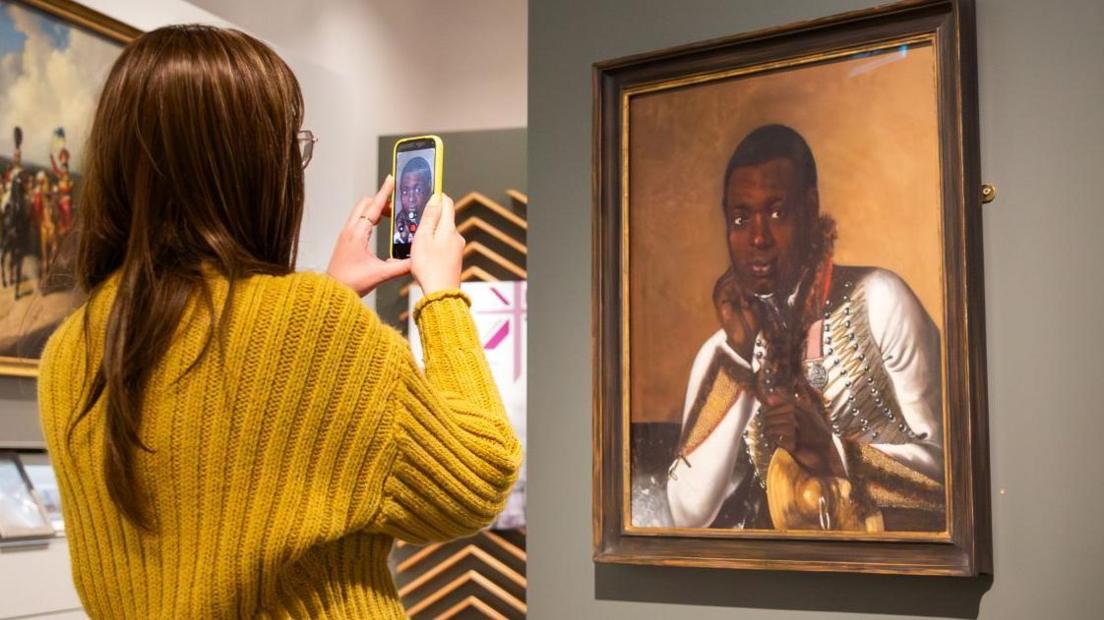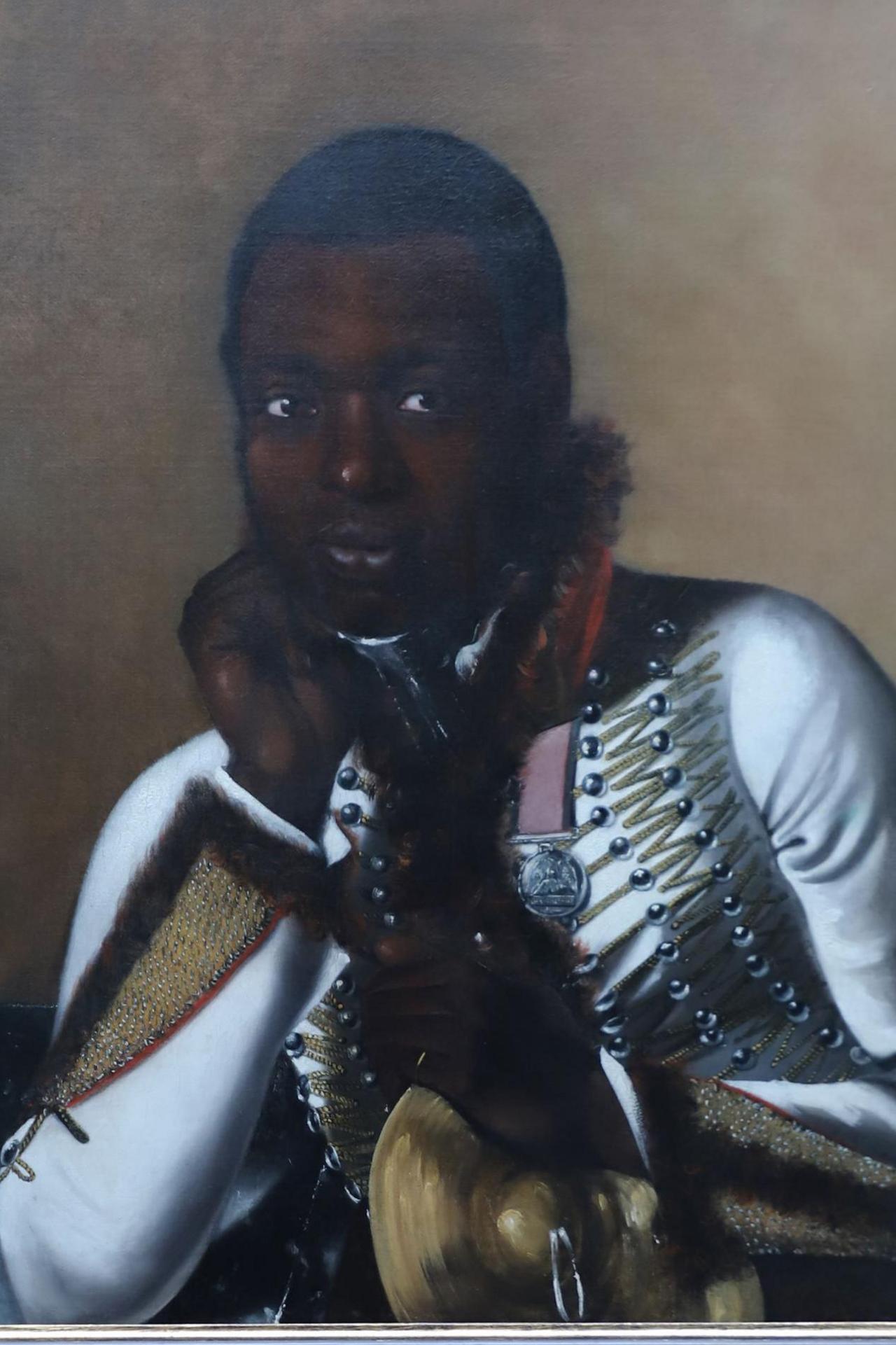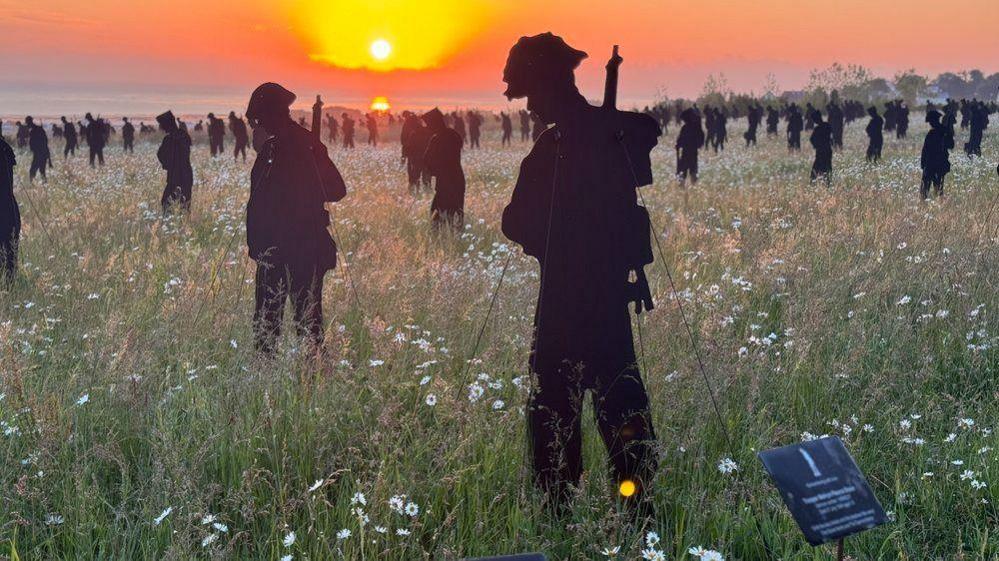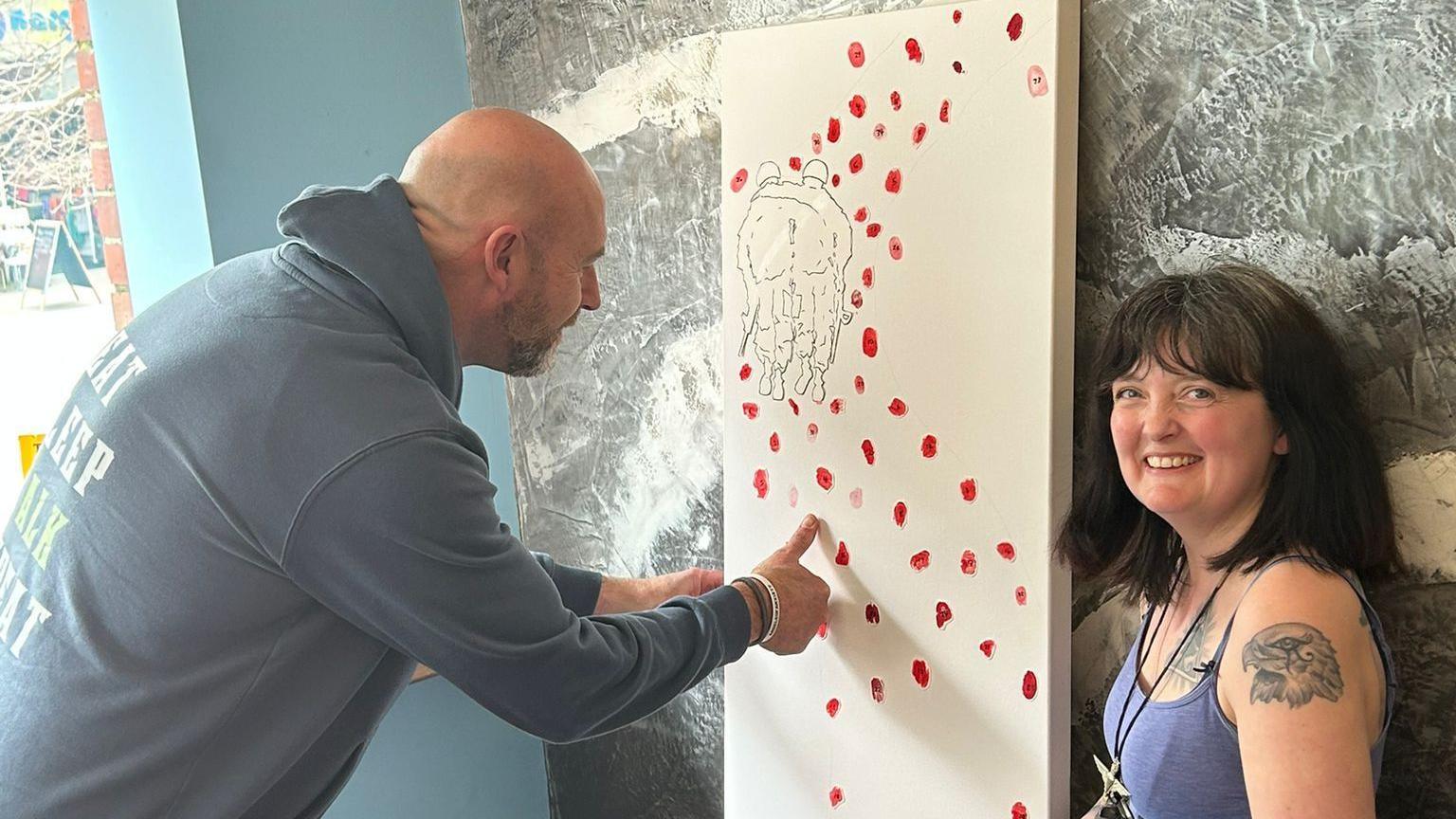Mystery black soldier identified by art experts

The National Army Museum hopes visitors will enjoy learning the story of Thomas James
- Published
Art experts believe they have solved the mystery of a portrait of a previously unidentified black soldier that hangs in the National Army Museum.
The painting dates back to the aftermath of the Duke of Wellington's 1815 victory over Napoleon at the Battle of Waterloo and depicts one of the few black British army soldiers to have received a Waterloo Medal.
Researchers say the artwork is likely to be of Thomas James, who came from Montserrat in the Caribbean and served with the 18th Light Dragoons.
The museum's director Justin Maciejewski said the "remarkable" work was a reminder the British army has always relied on personnel from many different backgrounds coming together for a "common cause".
'There for a reason'
The painting is considered special as it was "exceptionally rare" for a non-white veteran of Waterloo to appear in a portrait in 19th-century art, the museum says.
Having acquired the artwork earlier this year, trustees of the Chelsea museum wanted to uncover the story behind it.
The sitter had to be one of only nine black soldiers known to have been awarded the Waterloo Medal, as seen in the portrait, the museum's art curator Anna Lavelle said.
Researchers narrowed the list of candidates down further from other items in the painting.
"Those items were placed there for a reason - they tell a story," Ms Lavelle said.
The soldier wears a fur pelisse and holds a cymbal, which meant he was very likely to have belonged to a cavalry regiment, Ms Lavelle said.

Curators believe artist Thomas Phillips painted Thomas James on behalf of a senior officer who wanted to show gratitude for his military efforts
According to records, Thomas James, from the Caribbean, served with the 18th Light Dragoons - the only cavalry regiment with a significant role in the Battle of Waterloo.
Further research revealed James was badly injured while minding officers' baggage during the battle - an act that may have earned him a portrait, commissioned by an officer, Ms Lavelle said.
Based on these details, researchers concluded James was the "most plausible" candidate.
As a musician, he would have played a vital role both on and off the battlefield, as instruments were used to relay commands in combat and for entertainment, according to the museum.
James continued to serve with the regiment for some years before leaving the service and claiming his military pension.
'Meticulous work'
With the help of conservation experts at the University of Lincoln, an in-depth analysis of the artwork was carried out using specialist techniques.
This helped reveal the material the artist might have used and the time of the painting's creation.
Through this work, researchers also believe they have identified the artist as Thomas Phillips (1770-1845), a prominent portrait artist who painted many significant society figures.
It is believed that a senior officer may have commissioned the portrait of James in gratitude for his efforts.
As well as analysing the painting, the University of Lincoln team has conserved it to its former glory.
Rhiannon Clarricoates, co-director of Lincoln Conservation, said: "Our team worked meticulously to remove layers of discoloured varnish and non-original overpaint, which revealed fine details and highlights not previously visible, allowing the public to experience the artwork as it was originally intended.
"It has been a privilege to contribute to this project, which has safeguarded not only the physical integrity of the painting but also its cultural and historical significance for future generations."
Mr Maciejewski said: "We are proud to have uncovered this story of comradeship and courage.
"This remarkable portrait of Thomas James reminds us that our Army has always relied on soldiers and service personnel from many different backgrounds, who have come together for common cause – whether to face Napoleon, Hitler, or more recent threats to peace and security."
Listen to the best of BBC Radio London on Sounds and follow BBC London on Facebook, external, X, external and Instagram, external. Send your story ideas to hello.bbclondon@bbc.co.uk, external
Related topics
More stories like this
- Published25 September

- Published15 June 2024
